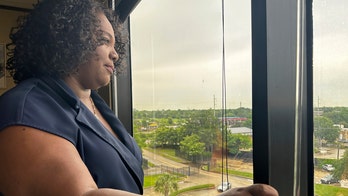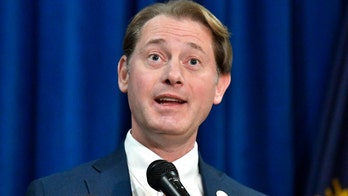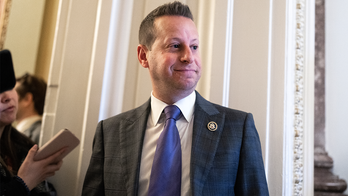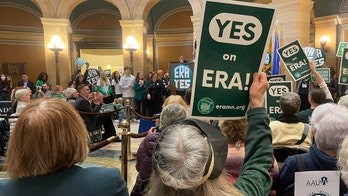Ever since our country began sliding into an historic economic recession, like you I have been studiously looking for signs of possible recovery. I watch the well-groomed on the evening news, I listen to the loud-and-boorish on AM radio, and I read for these signs in the smartest of online news sites – you know which, the ones featuring a British contributor with condescending wit.
I've learned even the most optimistic admit recent signs of recovery are weak and fragile. They say, in fact, our economy may not improve anytime soon, at least, not until those who were most hurt by the housing slump recover - Hispanics and first-time home buyers.
Hispanics after all, were one of the fastest growing groups in the real estate market prior to the collapse. Today, we are still the fastest growing segment of the population, especially in those states devastated by the housing bust - California, Nevada, and Florida.
I've learned even the most optimistic admit recent signs of recovery are weak and fragile. They say, in fact, our economy may not improve anytime soon, at least, not until those who were most hurt by the housing slump recover - Hispanics and first-time home buyers.
We now know America’s rampant foreclosure epidemic and the resulting Wall Street meltdown prompted the ongoing global economic crisis, and that many politicians on both sides of the aisle did not foresee things would turn out this way. Back when they approved legislation to require Fannie Mae and Freddie Mac guarantee home loans that eliminated risk against potential losses by lending institutions several years ago, it didn’t matter that they were shifting all of the risk to the American taxpayer. They envisioned their well-intentioned deed would result in more minorities realizing the venerable state of home ownership.
And for a while it did.
But the zeitgeist would deafen their ears to the voices of those who argued these measures would also distort true market prices, set in motion a boom and bust cycle, and create skewed incentives for brokers and lenders to exploit naïve new homebuyers. No mind was given to the fact these reforms would also induce people to over extend themselves and buy homes they could not afford. Benevolent government meddling superseded unintended consequences they reasoned. After all, homeownership was a right, the crown jewel of the American Dream.
Nonetheless, the bubble would pop. And when it did, the amount of wealth lost was staggering.
The prices of homes plummeted; falling more than 30 percent on average since 2006. Home equity levels of Hispanic homeowners dropped in half from $99,983 in 2005 to $49,145 in 2009. The homeownership rate among Hispanics fell from 51% to 47%. The net worth of Hispanic households dramatically shrank from $18,359 in 2005 to $6,325 in 2009. Even now, nearly one in ten homes with a mortgage are in some phase of foreclosure.
There were over 3.8 million foreclosures in the country in 2010. It is a figure hard to comprehend.
The harm caused by the foreclosure epidemic cannot be overestimated - there is, of course, the loss of equity and lifetime savings; the psychological impact; the loss of tax benefits; the displacement; and the loss of intergenerational wealth. (Homeownership has always been the primary means by which wealth is transferred to future generations.) The residents of Nevada are experiencing its effects in record numbers – their state posted the nation's highest state foreclosure rate for the 59th straight month in November.
Other states with significant Hispanic communities have also been hit especially hard. In California, for example, nearly one in eight—or approximately 702,000 homes - are currently in foreclosure proceedings. Nearly half of those foreclosures filed between September 2006 and October 2009 in California were for Hispanic homeowners, according to National Association of Hispanic Real Estate Professionals. The Center for Responsible Lending found that black and Latino borrowers in California have foreclosure rates twice as high as those of white borrowers in the state.
All the same, recent indicators show housing may have bottomed out and the time may be right for that much desired recovery we are all looking for.
LPS Applied Analytics reports that the rate of mortgage delinquencies are trending downward, from 8.83 percent of all active mortgages last December to 7.93 percent this October – a 28 percent drop from its January 2010 peak. As a direct result of the crash, the housing affordability index has nearly doubled in the past five years, and suddenly average American families now have almost twice the amount of income necessary to purchase median-priced homes.
The numbers of underwater borrowers - those who owe more than the current value of their homes - are also trending down according to bean counters at Core Logic. They report the housing sector had 10.7 million residential properties with a mortgage that was underwater at the end of the third quarter of 2011, a slightly lesser number than the 11.1 million in the fourth quarter of 2010.
Indicators also show holiday spending is doing fair, the economy is now adding some jobs, and bank lending has ticked up according to the Federal Reserve. Furthermore, Hispanic population numbers remain on track, birth rates have not slowed and the desire for home ownership remains high.
Yes, these signs are weak, and they are made much weaker by the threat of continuing the same policies that created the housing bubble in the first place. They must be resisted.
What we must do is permit the market to continue correcting the mal-investment, call on our community to live within their means, and patiently allow home prices to settle. But mostly, we must no longer allow do-gooder politicians to keep experimenting with the most consequential sector of our economy
The message here is; the recovery in the housing market, however slight, is occurring in spite of big government. It tells me this generation will rise again - that Americans as a people are resilient, irrepressible keepers of The Dream.
Daniel Garza was formerly Associate Director at the Office of Public Liaison for The White House. He is currently the Executive Director of www.TheLibreInitiative.com




